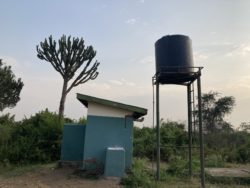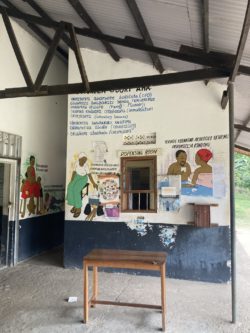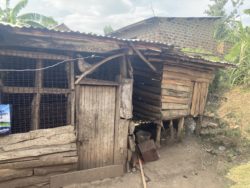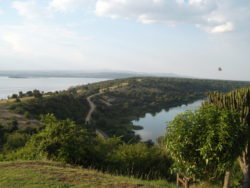AMR & Wildlife
Project summary
Summer 2022 visit to Queen Elizabeth National Park. This was a scoping project and involved informal and interactive discussions with community gate keepers and stakeholders from different backgrounds but all whom live within the vicinity of the National Park.
Stakeholders were already known to Dr Mitchell or introduced by known community gatekeepers. Rough anonymous notes were taken but no discussions were recorded or transcribed.
Aims
- Scope the potential for Queen Elizabeth National Park, Uganda to become a key field site for investigating the role of wildlife within AMR.
- Discuss knowledges of AMR with community gatekeepers plus stakeholders in human, animal health and conservation sectors.
- Map the local AMR risk factors as identified by these communities and stakeholders.
Activites
- Discussions with existing contacts and community gate keepers (wildlife research teams and teachers) to understand what working knowledges of AMR there are in this area and what language is used in reference to antimicrobial pollutants, medicines etc.
- Informal meeting with Village Health Teams and community clinics to understand they types of antibiotics commonly used in human health, common (mis)use issues and the relationship between government funded and private health care centers.
- Visit to the Ugandan Wildlife Authority lab to discuss the wider environmental challenges driving AMR in this area. For example; agro-pesticide usage, mining waste, sanitation issues and wild animal movement; all of which are influenced by rather extreme climatic changes this area is currently experiencing.
Findings
The major output of this trip was a co-created map identifying AMR risks in the area. There is a particular focus on the impact of AMR on wildlife, but human, domestic animals and environmental impacts are also considered.
View Map: Community Map Uganda 2022
The main points our community identified as AMR risks were:

Banded mongoose forage in waste disposal sites.
- Animals, livestock and humans live in very close proximity and there can be conflict leading to injury and infections.
- Poaching injuries to both wildlife and rangers cause infections and drive the use of broad-spectrum antibiotics.

Example of a good quality toilet with it's own water supply and functional hand washing station with soap.
- Good access to water but poor sanitation - high risk of infections.
- Malaria is endemic in this area and there are high levels during the shoulder seasons when a lot of standing water is present.

Example of Community Clinic dispensary area.
- Village Health Teams (the base level of community health in the area) are trained to prescribe antibiotics but often have limited supplies or choices of drugs which can lead to misuse.
- When VHTs refuse to prescribe antibiotics they can face push-back from the community.
- Community members who can afford to purchase antibiotics from drug stores will do so against the advice of the VHTs.

Animals kept in housing which adjoins the kitchen.
- Animals housed close to kitchens/home which makes infection spread likely.
- Addition of antibiotics to commercial animal feed but not at community level.
- Drug stores sell antimicrobials for human and animal health. Often the staff and owners will have no formal medical, pharmaceutical, or antimicrobial stewardship training.

Mweya peninsular surrounded by water.
- Use of agro-chemicals and pesticides in small holder farming is increasing.
- When rains come the pesticides are likely to run-off into the lakes and channels which then pass-through protected areas, human settlements, and other small holdings.
- Run-off of heavy metal waste from mines in mountains and foothills.
- The area is close the boarder with DRC. During periods of conflict both people and wildlife cross to Uganda. This could allow infections, including resistant infections to move with them.
